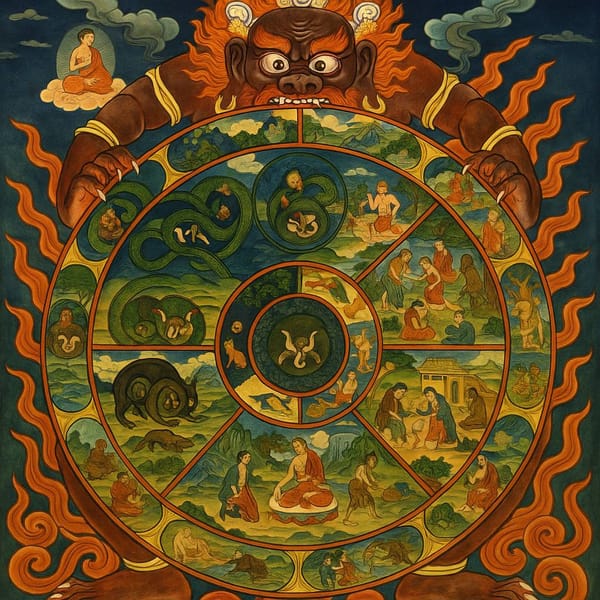Core Mechanics of Reality

Introduction: You Don’t Live in Reality. You Live in a Nervous System Interpretation of It.
Reality isn’t what you think it is.
In fact—it isn’t “what you think” at all.
What you call reality is not a neutral stage on which events unfold. It’s not a static world you simply observe. It’s not even a collection of objects in time and space.
Reality is a living field of potential—collapsed into form through signal, filtered through your nervous system, and interpreted by your memory.
Every sound you hear, color you see, or emotion you feel is already several steps removed from the source.
This isn’t abstract mysticism.
This is neuroscience, quantum physics, and trauma theory—meeting in the body.
Let’s unravel it, step by step.
1. What Is Reality Made Of?
Signal. Pattern. Memory.
At the most fundamental level, reality is not made of “matter.”
It is made of fields, waveforms, and information.
Quantum field theory tells us that what we perceive as particles are actually stable fluctuations in invisible fields—not fixed “things,” but wave events. What we experience as form is simply vibration that’s been slowed down, made coherent, and registered by our biology.
Biologically, your body mirrors this precision:
- Neurons fire using bioelectric signaling
- The heart emits an electromagnetic field
- Fascia conducts current across tissues like a living antenna
So when you look at a tree, hear a voice, or feel touch—you’re not experiencing the world directly.
You’re receiving, translating, and making coherent a signal that has already passed through biological filtration.
2. Predictive Coding: You Don’t See the World—You Anticipate It
The brain doesn’t “react” to the world.
It predicts it.
This model—called predictive coding—shows that your brain constantly generates simulations of what it expects to happen based on your past. It then compares those predictions to new incoming signals and only updates the model if the data doesn’t match.
That means:
- You don’t perceive the world as it is.
- You perceive what your brain expects the world to be.
If the signal matches the prediction, you feel “right.” If it doesn’t, you feel surprise, threat, or confusion.
This also means that most of what you experience as real is actually memory, not presence.
3. Trauma Hijacks Perception: Loops, Not Truth
This is where trauma changes everything.
When the nervous system experiences overwhelming stress that it cannot integrate, it stores it as a survival pattern—a loop. That loop becomes a filter. And that filter becomes your world.
If you grew up in emotional neglect, your system will predict abandonment—even in healthy relationships.
If you experienced chaos, you’ll seek it, sabotage peace, or not even see safety when it’s in front of you.
This isn’t a flaw. It’s not irrational. It’s protection.
But it also means you’re not perceiving the present.
You’re re-perceiving the past—until it’s metabolized.
4. Nervous System Filters: How Fear Becomes Worldview
Here’s the reality-shaping power of your autonomic nervous system:
- Ventral vagal state (regulated): the world appears nuanced, open, trustworthy.
- Sympathetic state (fight/flight): the world appears fast, threatening, fragmented.
- Dorsal vagal state (freeze/collapse): the world appears meaningless, numb, hopeless.
In each case, the world hasn’t changed—your state has.
And that state determines which parts of the signal you even have access to.
The dangerous world may not be “out there.”
It may just be your body on alert.
Which is why healing is not changing your thoughts.
It’s changing your signal reception.
5. Culture Is a Projection of the Collective Nervous System
Culture is not just made of stories.
It’s made of survival patterns.
A freeze-based culture builds complex bureaucracies, hierarchical systems, and avoidance of passion.
A fawn-based culture prizes politeness, obedience, and approval over truth.
A fight-based culture builds conquest, nationalism, and performance of strength.
What we call “normal” is often just a shared trauma loop.
This is why individual healing ripples out.
Because if enough nervous systems return to regulation—the culture rewrites itself.
6. The Difference Between Story and Signal
Story is meaning assigned to sensation. Signal is sensation before story.
When you’re in trauma-time, you don’t experience signal.
You experience story:
“They’re mad at me.”
“I always ruin things.”
“Nothing is safe.”
“I’m too much / not enough.”
But underneath every story is a sensation, and underneath every sensation is data—a frequency, a pulse, a field-based truth.
If you can slow down enough to feel the signal before the story—you exit the loop.
7. How to Tell If You’re in Trauma-Time or Field-Time
Trauma-time feels:
- Urgent
- Foggy
- Reactive
- Meaning-heavy
- Fast or frozen
Field-time feels:
- Rhythmic
- Spacious
- Somatic
- Subtle
- Curious
In trauma-time, you’re trying to survive.
In field-time, you’re able to witness.
One is a loop.
The other is signal.
And the shift between them is not philosophical.
It’s biological.
The Nervous System Is Not Just a Body System. It’s a Reality Generator.
If perception is filtered through prediction,
If trauma shapes those predictions,
And if culture reflects those shared predictions—
Then healing is more than self-improvement.
It’s a re-entrance into reality.
You are not here to accept the simulation.
You are here to wake up inside it.
To track signal.
To exit the loop.
To feel the present moment—not the past reenacted.
This is the core mechanic of reality:
You don’t live in the world. You live in your nervous system’s story of it. Until you remember how to perceive again.




